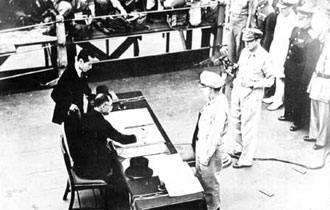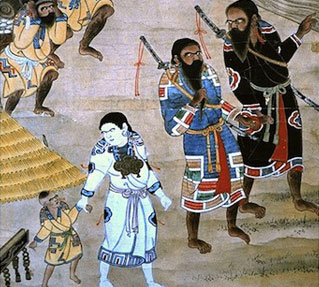Pages |
One committed suicide, but the other, Kim Hyonhui, eventually testified about the planning and carrying out of the bombing. She said that she had been trained to masquerade as a Japanese woman, and in the course of her training was made to live with a woman from Japan who was working for the North Korean intelligence apparatus. Japanese police brought pictures to Seoul during the interrogation of Kim Hyonhui, and she confirmed that a picture of a woman who had disappeared from a Japanese beach years earlier indeed was of her teacher. Eventually, Japanese police came to claim that more than a dozen Japanese nationals that had disappeared were taken against their will to North Korea. Prime Minister Koizumi's two trips to Pyongyang focused largely on gaining information on the fate of these abductees and securing the return of those still alive as well as their family members.
North Korean Military Programs
The most serious issues for Japan are North Korea's nuclear weapons program and its manufacture and testing of ballistic missiles. North Korea has already sent missiles over Japanese territory on their way to the Pacific Ocean. Should such a missile be armed with a nuclear device, the implications for Japan are quite frightening indeed.
During the early 1990s, United States, no longer under the constraints of the Cold War, started considering the possibility of attacking North Korean nuclear facilities. In order to resolve the tension, the United States and North Korea in 1994 entered into what is known as the "Agreed Framework." The crux of the agreement was that North Korea would halt its nuclear weapons program and shut down its graphite reactors and plutonium reprocessing facilities in exchange for two 1000-megawatt light-water plants that would be provided by the United States, Japan, and South Korea.
North Korea was obligated to stay in the Nuclear Non-proliferation Treaty and allow the International Atomic Energy Commission to inspect its nuclear facilities. During late 2002 and early 2003 announcements by Pyongyang that it would restart its nuclear program and withdraw from the Non-proliferation Treaty made headlines and prompted politicians in the U.S. and Japan to call North Korea a menace and a greater danger to the world than Iraq. However, in all fairness it should be noted that the two light-water reactors were originally due to have been completed by 2003 but were already at least five years behind schedule. Bellicose statements from Washington, including calling North Korea part of an "Axis of Evil" and release of an updated nuclear doctrine listing North Korea as a possible target for a U.S. nuclear attack also predated the North Korean moves.
Koizumi-Kim Talks
Koizumi's most radical foreign policy initiative was his opening to North Korea. It came as a total shock to most observers in September 2002 when he suddenly announced that he would visit the isolated Stalinist state later that month. Koizumi's sudden opening to North Korea was probably due in part to North Korean leader Kim Jong-il's distress at being included in George W. Bush's "Axis of Evil," especially as he saw the U.S. gear up for an invasion of fellow axis "member" Iraq. It is also likely that Koizumi wanted to remove North Korea from Bush's shortlist of targets in his "war on terrorism," as any military conflict in Korea could have dire consequences for Japan.
Pages |











